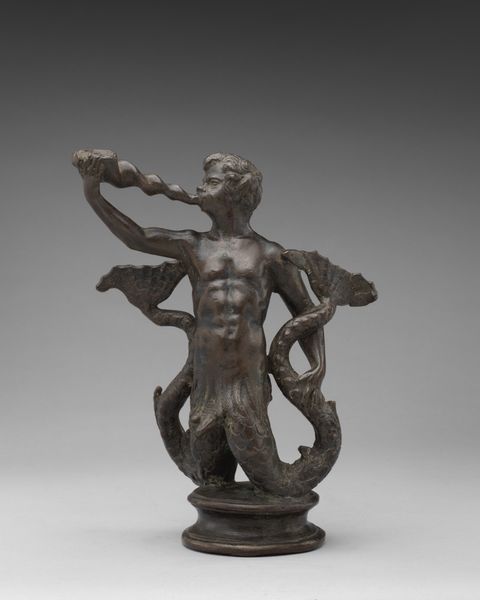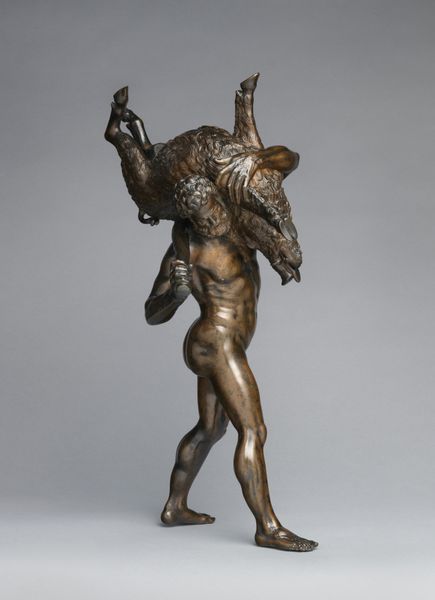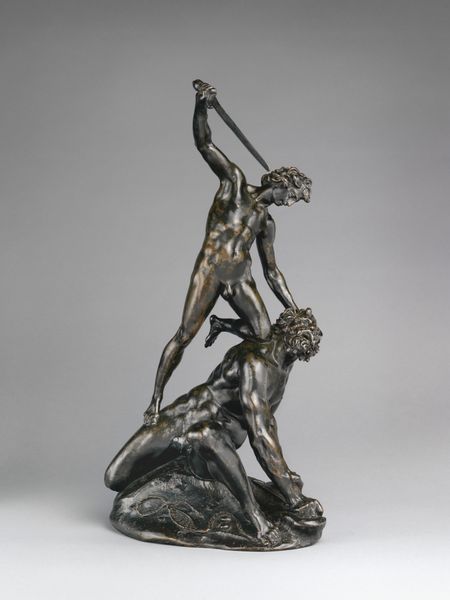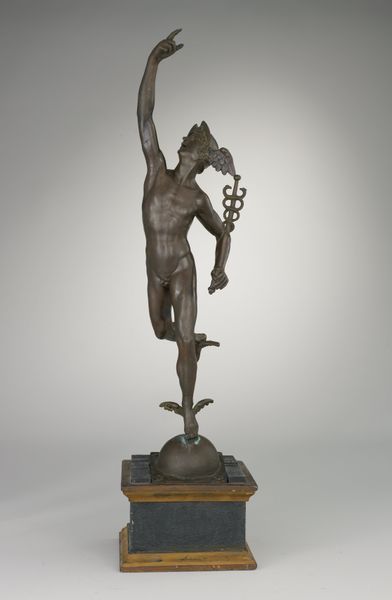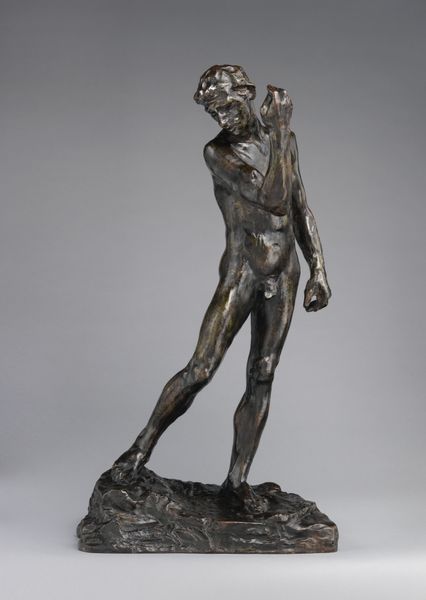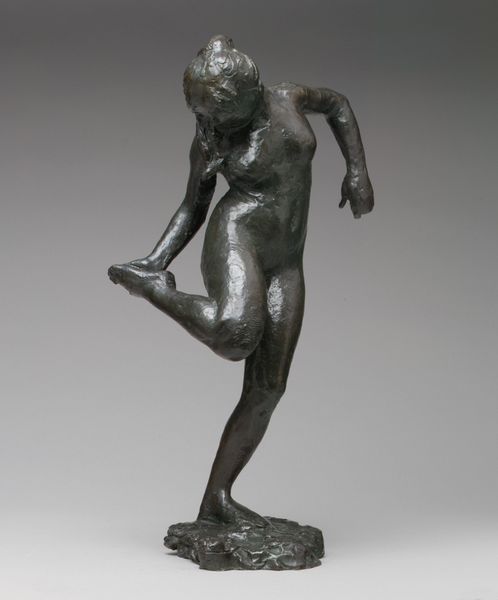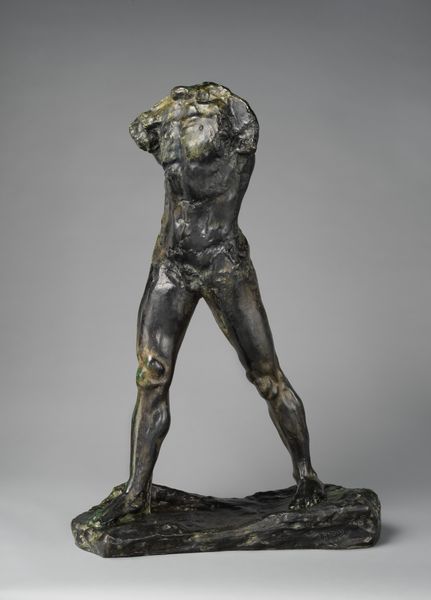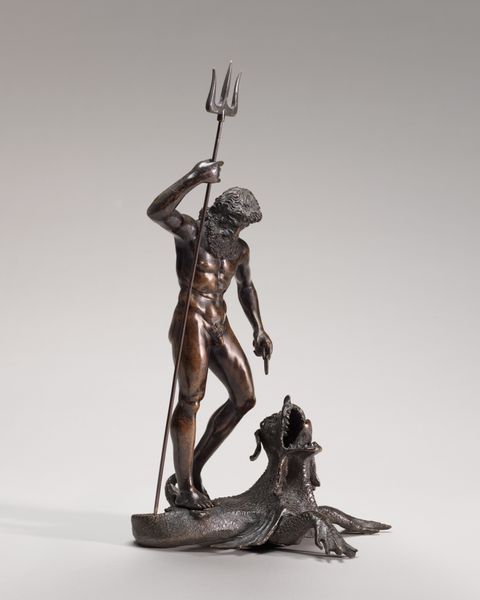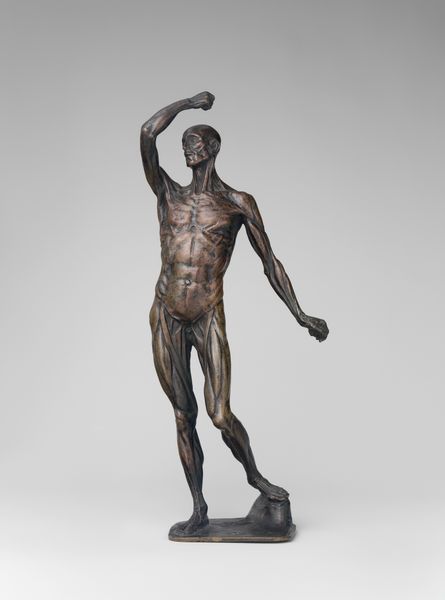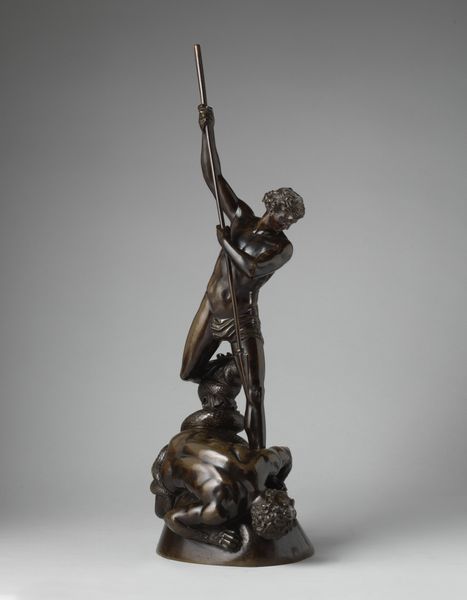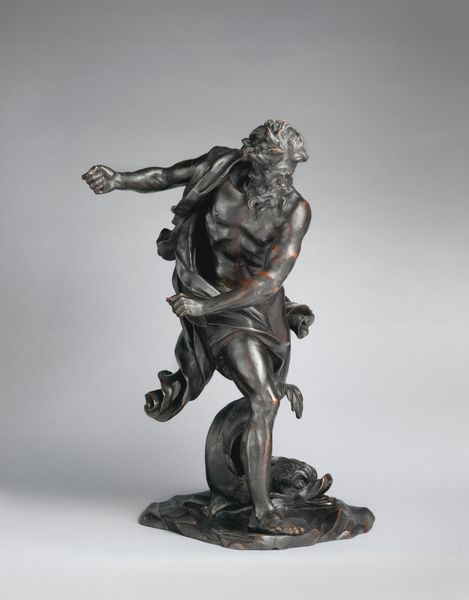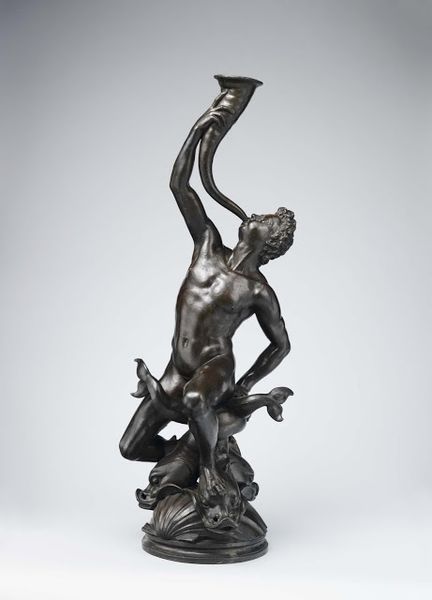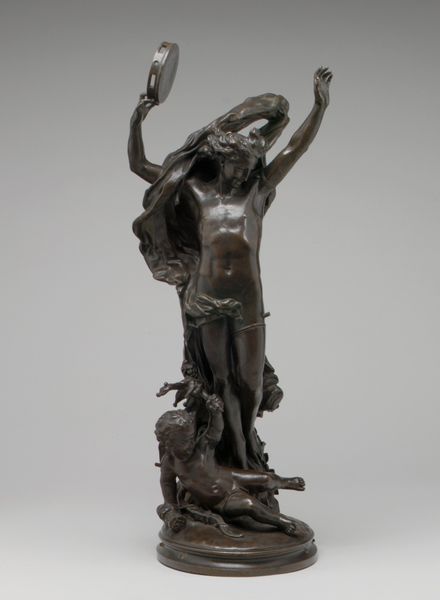
Dimensions: Overall (confirmed, width and depth subjective depending on rotation): 13 1/4 × 4 3/8 × 6 3/4 in. (33.7 × 11.1 × 17.1 cm)
Copyright: Public Domain
Curator: Look at this bronze sculpture, known as "Mercury," crafted sometime in the 17th or 18th century. It's attributed to Giambologna and currently resides here at the Metropolitan Museum of Art. Editor: Wow, he looks so… triumphant, doesn't he? Balanced on, is that a breath of wind he's standing on? And the patina, that dark bronze is lovely. It feels both classical and incredibly dynamic. Curator: That dynamism is very characteristic of Mannerism. Let's consider the historical context: Giambologna and the late Renaissance saw the rise of the Medici, exploring the ways in which power was conceptualized and visually communicated during this pivotal period. Representations of nude male figures like Mercury played a role in reaffirming the era's ideologies regarding aesthetics and athleticism. Editor: Absolutely, I think we should not lose the sensuality, but I can't help seeing a commentary too! Think about how he's frozen mid-flight, with a hand reaching up like he’s hailing a cab! And it’s all on this elaborate puff of bronze. So absurd. Is it celebrating him, or gently poking fun? Curator: That potential tension between the heroic and the slightly absurd reflects the anxieties simmering beneath the surface. Questions of social hierarchies and gender performances definitely add interesting layers to it. Mercury, or Hermes, was known as a messenger. Think about that idea in context of wealth and trade within these powerful, burgeoning empires. Editor: True, a bronze symbol for something light, instantaneous even, feels delightfully heavy-handed now! What was so revolutionary then suddenly is almost comical, a fixed icon attempting to move but stuck in its form, that beautiful, static, but also somehow desperate, bronze body. Curator: Precisely, so much about how we view these works is conditioned by both time and power and allows for critical reflection. Editor: Yes. Ultimately this journey back shows us what we value and see when we come back. Thanks for the trip.
Comments
No comments
Be the first to comment and join the conversation on the ultimate creative platform.
